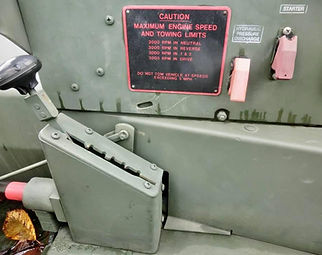top of page
HAWK
USMC, US ARMY, NATO FORCES and Others
HAWK MISSILE SYSTEM
The HAWK surface to air missile system provides medium-range, low to medium altitude air defense against a variety of targets, including jet and rotary wing aircraft, unmanned aerial vehicles, and cruise missiles. This mobile, all-weather day and night system is highly lethal, reliable, and effective against electronic countermeasures. The Hawk was originally named for the predatory bird but later the name was turned into an acronym for Homing All the Way Killer.
The HAWK system has provided US forces with low to medium altitude air defense for the past forty years. The Hawk System has been the Marine Corp's primary air defense since the early 1960's. Basic HAWK was developed in the 1950's and initially fielded in 1960. The system has been upgraded through a series of product improvements beginning with the Improved HAWK in 1970. The Phase III product improvement and the latest missile modification were first fielded in the early 1990's to the US Army and US Marine Corps (USMC). The system has maintained it's effectiveness against succeeding generations of high technology aircraft through periodic pre-planned product improvement programs. An evolving system, HAWK is now in its Phase III configuration with research and development underway to obtain a tactical missile defense capability.
These successes lead many NATO countries to adopt HAWK as a primary air defense weapon. Today, HAWK systems are in the arsenals of over fifteen countries, including most of NATO countries. In the coming years, HAWK will continue its prominent position by undergoing system upgrades to allow it to deal with the changing nature of the battlefield threat.
Although HAWK missile batteries were deployed by the U.S. Army & Marine Corps during the conflicts in Vietnam (USMC "A" Btry 1st LAAM Bn, MACG-38, 3rd MAW, FMF PAC, arrived at DaNang Airbase RVN Feb 8, 1965, the first combat troops in Vietnam) and Persian Gulf, American troops have never fired this weapon in combat. The first combat use of HAWK occurred in 1967 when Israel successfully fired the missiles during the Six Day War with Egypt. Even though it was not used by the coalition during Operation Desert Storm, the HAWK missile did see action during the Persian Gulf War. Kuwaiti air defense units equipped with U.S. HAWK antiaircraft missiles downed about 22 Iraqi aircraft and one combat helicopter during the invasion of 2 August 1990.
Click on the link below for additional information on HAWK antiaircraft missile system
http://www.designation-systems.net/dusrm/m-23.html
MIM-23 IMPROVED HAWK (IHAWK) MISSILE SYSTEM













XMEM-23B HAWK Missile
with full telemetry version for
testing and evaluation purposes

M-501: Missile loading tractor with missiles









AN/MS-43 Missile Test Shop




Missile Test Section FIREX 2-73
South Vandenburg AFB
11 Oct - 6 Nov 1973
BATTERY CONTROL CENTRAL- The battery control central is a centrally located operations shelter that provides equipment for control of the overall operation of the Hawk battery during tactical firing operations. This shelter and the design of the Hawk system permit continuous control of the entire missile battery by an officer designated as the tactical control officer. Four additional personnel are required for normal operation of the battery control central, each operator being stationed at one of the consoles.










ASSAULT FIRE COMMAND CONSOLE - The assault fire command console (AFCC) is a miniature battery control central contained in a compact, lightweight, rectangular case. The console has permanently attached folding legs and can be emplaced in any convenient location. Six electronic panels mounted on the AFCC provide the capability for remote control of one firing section of the battery. The AFCC is utilized as the alternate battery control central if the battery control central is not available. The AFCC controls one CWAR, one HPI, and three launchers with a total of nine missiles.
VIDEO CLIPS FROM ISRAELI AIR FORCE MUSEUM OF
HAWK MISSILE SYSTEM
Guardian of the Skies
The I-Hawk Missiles are capable of flying at amazing speeds, with one mission in mind - to counter any hostile air targets within a range of 40 kilometres around Singapore. They are the I-Hawk missiles, part of the Republic of Singapore Air Force's defence umbrella. Khai Yan follows an I-Hawk firing unit on one of their deployment exercises to find out how these missiles are deployed when Singapore's air space is threatened.
FRENCH Military HAWK Missile Firing
bottom of page